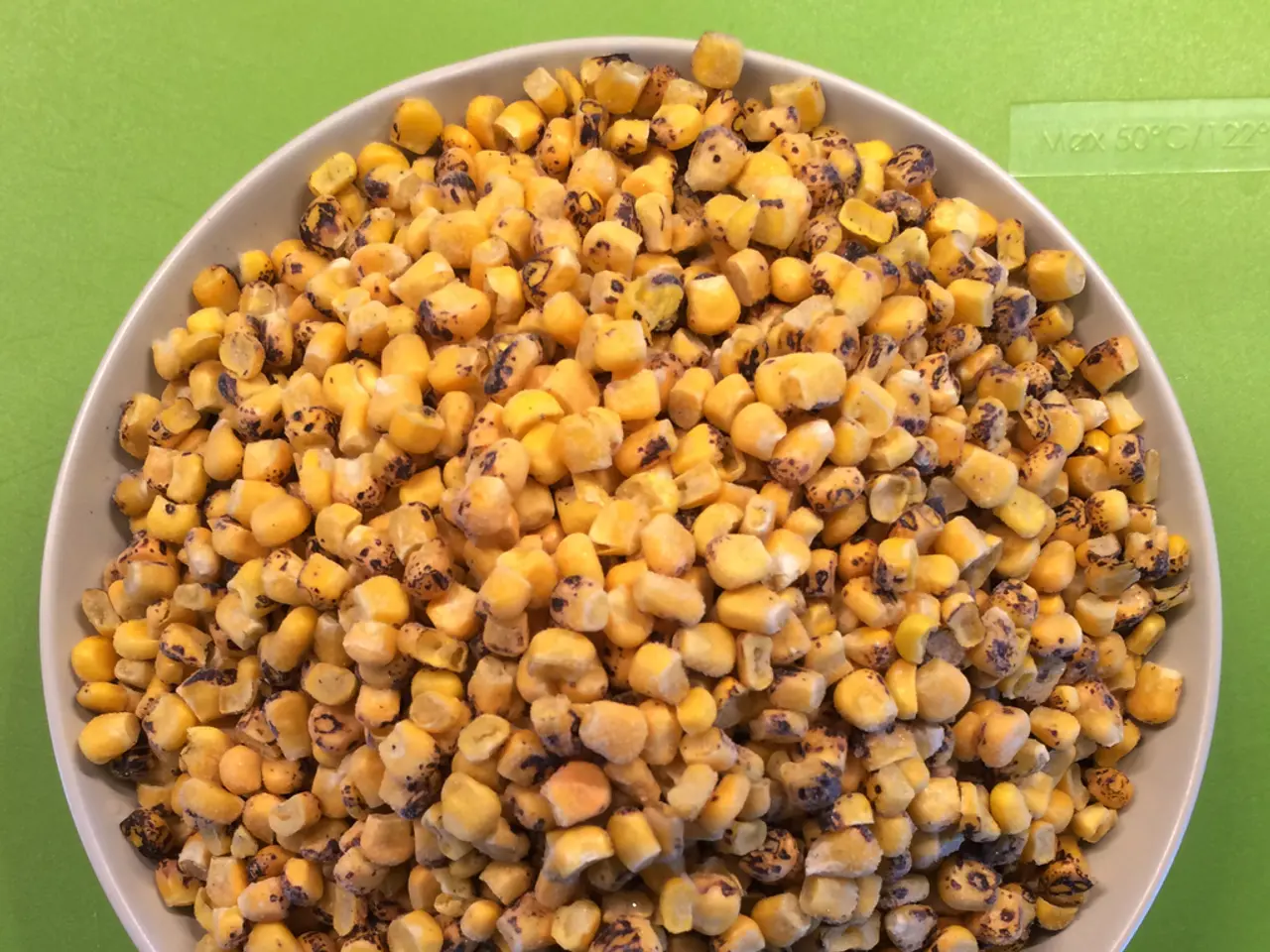Upbeat prognosis for farmers following a disappointing spring: projected corn and grain yields
=========================================================================================
In the face of a challenging and dry spring, the United States Department of Agriculture (USDA) has released its latest projections for the yields of major grain types in 2025. The news reveals a mix of positive and negative trends, with winter grains showing resilience while spring grains are more adversely affected.
Winter Wheat Yields Hold Steady, Approaching Record Highs
The projected yield for winter wheat in 2025 is 54.2 bushels per acre, which is 2.5 bushels higher than last year and potentially the second-highest yield on record. Despite a slight decline in total production volume compared to 2024, the average yield is set to be impressive. Some states, such as Illinois, Michigan, and Missouri, are even on track for record-high yields.
Winter Barley Yields Also Improve Slightly
The yield for winter barley is projected to be 77.1 bushels per acre, a 0.4 bushel increase from last year. Production is expected to rise by 3%, with Colorado, Idaho, and North Dakota forecast to have record-high barley yields.
Spring Wheat and Summer Barley Yields Negatively Impacted
Spring wheat production is projected at 504 million bushels, a decrease from last year due to decreases in both harvested area and yields. The negative impact from the dry spring conditions is evident, as USDA anticipates lower harvested area and yields compared to last year.
Export Volumes Affected by External Factors
In addition to the weather-related challenges, export volumes have been impacted by external factors such as geopolitical issues and infrastructure damage, which may indirectly affect market dynamics and farmer decisions.
Yield Projections in a Nutshell
| Grain Type | 2025 Yield Projection | Change vs. 2024 | Notes | |----------------|--------------------------------------|---------------------------------|-----------------------------------| | Winter Wheat | 54.2 bushels/acre | +2.5 bushels (potentially second-highest yield on record) | Production volume down slightly | | Winter Barley | 77.1 bushels/acre | +0.4 bushel | Production up 3%, record yields in some states | | Spring Wheat / Summer Barley | Lower yields and harvested area (504 million bushels production) | Lower than 2024 | Negative impact due to dry spring |
These yield projections reflect resilience in winter grains despite adverse weather, while spring grains are more negatively affected. Farmers had initially expressed concerns about their grain harvest due to the lack of rainfall a few weeks ago, but the latest projections offer a more positive outlook for winter grains.
[1] USDA, 2025 Winter Wheat and Barley Yield Projections [2] USDA, 2025 Spring Wheat and Summer Barley Yield Projections [3] USDA, 2025 Export Volumes and Market Dynamics [4] USDA, 2025 Geopolitical and Infrastructure Impact on Grain Production
Economic and social policy discussions could involve the impact of adverse weather conditions on farm production and the subsequent effect on export volumes and market dynamics. For instance, the dry spring in 2025 has led to reduced yield projections for spring wheat and summer barley, which may warrant policy interventions to mitigate the potential economic losses for farmers and stabilize the market.
Moreover, while winter grains like wheat and barley have shown resilience in the face of weather challenges, further studies addressing long-term climate change could provide valuable insights for future economic and social policy strategies aimed at ensuring agricultural sustainability and food security.








